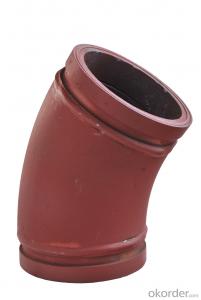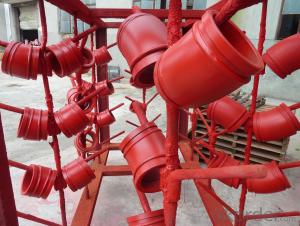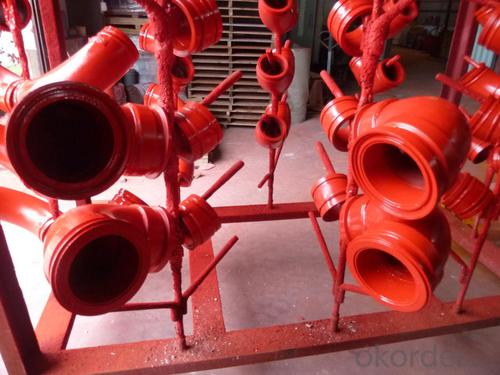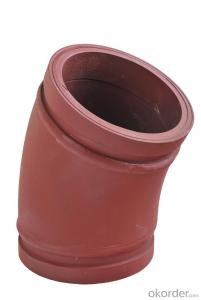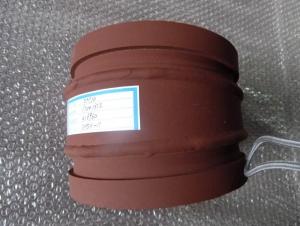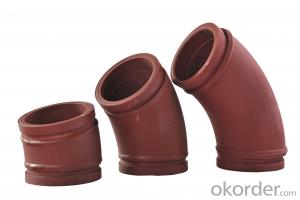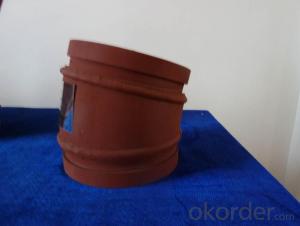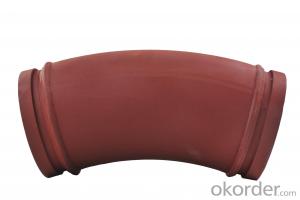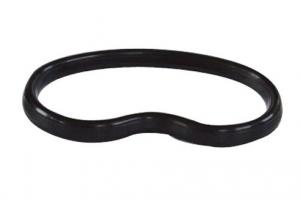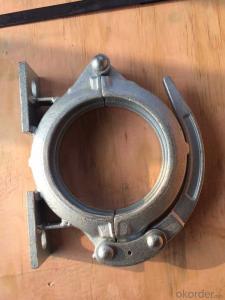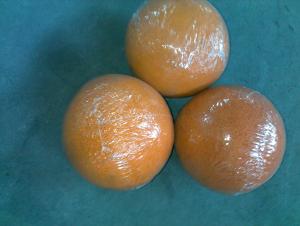Twin Wall Elbow for Concrete Pump R275 30DGR
- Loading Port:
- Tianjin
- Payment Terms:
- TT or LC
- Min Order Qty:
- 50 pc
- Supply Capability:
- 5000 pc/month
OKorder Service Pledge
OKorder Financial Service
You Might Also Like
Product Description:
Product Name: Twin Wall Pipe for Concrete Pump Pipe
Specification
(1) Material: Q235 (outside) + GCr15(inside)
(2) Thickness: 3mm (outside) + 9mm (inside)
(3) Technology: Quenching under high temperature
(4) Characteristics: the inner rigidity to 63 HRC; the outside has so high toughness to keep the inner.
(5) Matched with: Twin wall flange, Alloy (GCr15) + 20#
(6) Working Pressure:170bar
(7) Service life: above 60,000 cubic meters.
(8) Package: PP woven bag and plastic cap
Twin wall elbow is created with research of us and need of the market. Its service life and working pressure are better than the casting. Besides, We can supply 90D, 45D, 30D, 25D, 20D, 15D, 10D. And it can be used for PM, JUNJIN, Schwing, Cifa, Sany, ect.
3. Application
Concrete delivery.
4. Package
Put into containers.
FAQ:
Q1: Why buy Materials & Equipment from OKorder.com?
A1: All products have its ISO certifications, adheres to the highest standards and a commitment to supply chain safety and customer satisfaction.
Q2: How do we guarantee the quality of our products?
A2: We have established an advanced quality management system which conducts strict quality tests at every step, from raw materials to the final product. At the same time, we provide extensive follow-up service assurances as required.
Q3: How soon can we receive the product after purchase?
A3: Within three days of placing an order, we will begin production. The specific shipping date is dependent upon international and government factors, but is typically 10 to 30 workdays.
Q4: If we can produce Twin Wall Pipe for Concrete Pump Pipe according to customers request?
A4: Yes, we can produce Twin Wall Pipe for Concrete Pump Pipe according to the difference country situations to make it suitable to the market and customers. We have very professional technical team to make the design.
Q5: How to make a quick resolution for after service?
A5: We have overseas branches all-around of world, If needed, the seller shall dispatch 2 engineers to the buyer's site for supervision of training. The buyer shall make available of necessary facilities &skilled personnel at site for training.
Images:
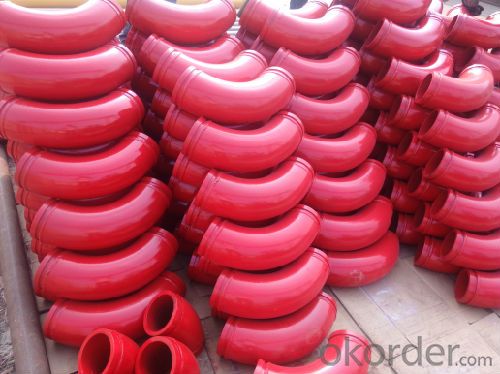

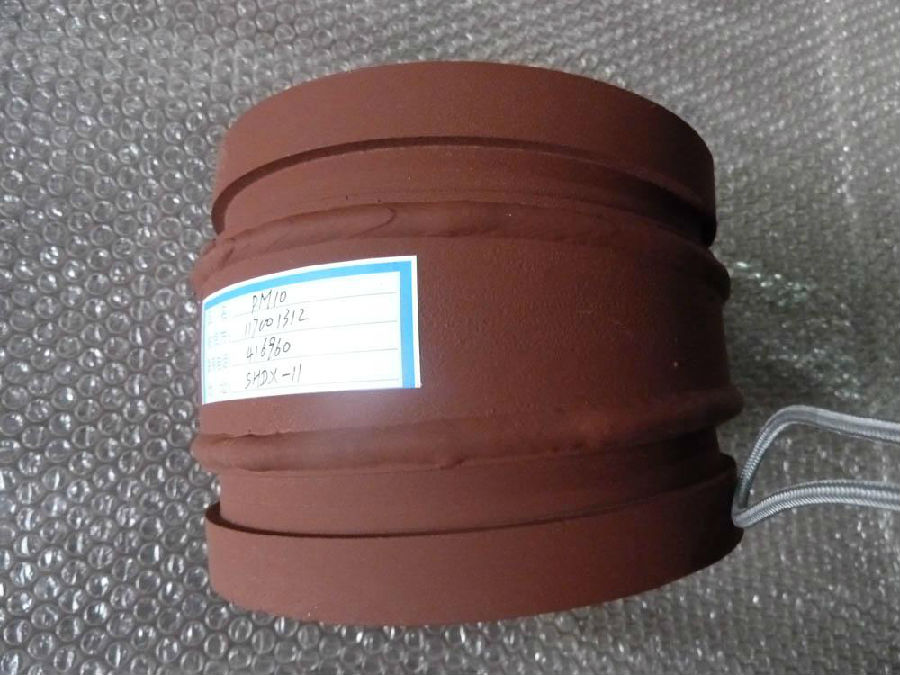
- Q: How do I properly maintain and replace hydraulic hoses in concrete pump spare parts?
- Proper maintenance and replacement of hydraulic hoses in concrete pump spare parts involve a few essential steps. Firstly, it is crucial to regularly inspect the hoses for signs of wear, including cracks, leaks, or bulges. Any damaged hoses should be replaced immediately to avoid any potential accidents or disruptions in the pumping process. When replacing hydraulic hoses, it is essential to use high-quality hoses that are compatible with the concrete pump system. It is recommended to consult the manufacturer's guidelines or seek professional advice to ensure the correct specifications and fittings are used. During installation, make sure to properly clean and prepare the hose fittings and connections. This involves removing any debris or dirt that could cause contamination or hinder a secure connection. Additionally, it is essential to follow the recommended torque specifications when tightening the fittings to prevent over-tightening or under-tightening, which can lead to leaks or hose failure. Regular maintenance also includes regularly checking and replacing hydraulic oil and filters according to the manufacturer's recommendations. This helps to ensure optimal performance and prolong the lifespan of the hydraulic hoses and other components. Overall, proper maintenance and replacement of hydraulic hoses in concrete pump spare parts require regular inspections, the use of high-quality hoses, proper cleaning and preparation during installation, correct torque specifications, and adherence to manufacturer guidelines for maintenance and replacement intervals.
- Q: What are the causes of pipe blockage in concrete pump?
- The concrete mixture ratio of adverse pressure gradient in the relatively large, water will be through the aggregate gap penetration, the aggregate coalescence caused by plugging occurred in the pipeline, and the pipeline bending diameter hose is arranged in the middle; in addition, concrete water cement ratio is too large to cause the separation of mortar and aggregate segregation, and plugging
- Q: What is the function of a concrete pump hopper filter?
- Preventing damage and blockages, the concrete pump hopper filter's main function is to keep large debris, like rocks, out of the pump. It acts as a barrier between the hopper and the pump, ensuring that only properly sized aggregate and concrete mixture is pumped through. By reducing the risk of clogs and wear on the equipment, the filter helps maintain the pump's efficiency and longevity. Moreover, it removes unwanted contaminants, thus preserving the quality of the pumped concrete. In construction projects, the concrete pump hopper filter plays a crucial role in safeguarding the pump and ensuring a seamless and uninterrupted flow of concrete.
- Q: What are some common issues with concrete pump pipes and how can they be prevented?
- Some common issues with concrete pump pipes include clogging, wear and tear, and leakage. These issues can be prevented by regularly cleaning the pipes to avoid clogging, using high-quality pipes that are resistant to wear and tear, and ensuring proper installation and maintenance to prevent leakage. Additionally, using the correct concrete mix and adjusting the pump pressure appropriately can also help prevent these issues.
- Q: What is the role of a concrete pump hopper grate spring?
- The primary function of a concrete pump hopper grate spring is to offer tension and support to the hopper grate within a concrete pump. It is typically crafted from robust and flexible materials like steel or rubber, and its purpose is to securely hold the hopper grate in place while allowing for necessary movement and flexibility during the concrete pumping process. By preventing the hopper grate from becoming dislodged or damaged by the force and vibrations produced by the concrete pump, the hopper grate spring proves invaluable. It guarantees that the grate remains appropriately aligned and in its proper position, facilitating a smooth and efficient flow of concrete into the pump. Moreover, the grate spring lessens the impact and stress experienced by the hopper grate, thereby enhancing its lifespan and minimizing the requirement for frequent repairs or replacements. Acting as a buffer, it absorbs and distributes the substantial forces exerted on the grate due to the weight and pressure of the concrete being pumped. In conclusion, the concrete pump hopper grate spring plays a pivotal role in preserving the integrity and functionality of the hopper grate, thereby ensuring the safe and efficient operation of the concrete pump.
- Q: Are there any specific troubleshooting steps for identifying issues with concrete pump spare parts?
- Yes, there are specific troubleshooting steps for identifying issues with concrete pump spare parts. These steps typically involve inspecting and testing the spare parts for any visible damage, checking the compatibility of the parts with the concrete pump system, ensuring proper installation and alignment, and testing the functionality of the parts under normal operating conditions. Additionally, consulting the manufacturer's guidelines and seeking professional assistance can also help in identifying any issues with concrete pump spare parts.
- Q: How can one source reliable suppliers for concrete pump spare parts?
- To find reliable suppliers for concrete pump spare parts, several steps can be taken. Firstly, conducting comprehensive research on potential suppliers is crucial. This involves searching online directories, industry forums, and construction equipment and spare parts marketplaces. Valuable insights into the reliability and quality of the suppliers can be gained by reading customer reviews and ratings. Secondly, seeking advice and recommendations from experienced industry professionals and experts in the concrete pump industry is advisable. They can provide references for reliable suppliers they have previously worked with. Attending trade shows and exhibitions related to the construction industry is also a beneficial way to connect with suppliers and evaluate their product offerings in person. This allows for direct communication and the opportunity to assess the reliability and quality of their spare parts. Additionally, requesting samples or product catalogs from potential suppliers is essential to ensure that the spare parts meet the required specifications and quality standards. This helps in assessing the reliability of the suppliers and the compatibility of their products with the concrete pump. Furthermore, conducting background checks on the suppliers is crucial. Verifying their credentials, certifications, and licenses provides assurance of their reliability and professionalism. Inquiring about their manufacturing processes and quality control measures is also beneficial to ensure the consistency and durability of the spare parts. Lastly, comparing prices, warranties, and after-sales services offered by different suppliers aids in making an informed decision. Striking a balance between cost and reliability is important to establish a long-term and fruitful partnership. By following these steps and thoroughly evaluating and researching potential suppliers, reliable suppliers for concrete pump spare parts can be sourced. This ensures the smooth operation and maintenance of equipment.
- Q: How often should concrete pump S valves be inspected and replaced?
- Concrete pump S valves should be inspected regularly, ideally every 500 hours of operation or at least once a year. However, the replacement of S valves will depend on various factors such as the quality of the concrete being pumped, the frequency of use, and the overall condition of the valve. It is recommended to consult the manufacturer's guidelines and seek professional advice to determine the specific timing of S valve replacement.
- Q: What is the second generation pumping technology of concrete pump?
- The whole hydraulic control technology delivery pump has no constant pressure pump, no PLC in the control box, no nitrogen gas storage tank and no close switch at the water tank. The structure is simple, and the maintenance cost is greatly reduced.
- Q: How often should concrete pump remote control batteries be replaced?
- The replacement of concrete pump remote control batteries relies on several factors, including frequency of usage, battery quality, and environmental conditions. However, as a general rule, it is advisable to change the batteries every 6 to 12 months. This guarantees optimal functioning of the remote control and prevents unforeseen battery failures during crucial operations. Additionally, it is crucial to periodically assess battery performance and perform maintenance checks to ensure proper functionality.
Send your message to us
Twin Wall Elbow for Concrete Pump R275 30DGR
- Loading Port:
- Tianjin
- Payment Terms:
- TT or LC
- Min Order Qty:
- 50 pc
- Supply Capability:
- 5000 pc/month
OKorder Service Pledge
OKorder Financial Service
Similar products
Hot products
Hot Searches
Related keywords


